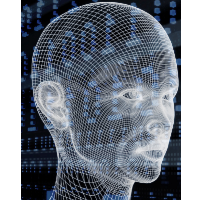San Diego Police Facial Recognition Program Flies Under the Radar
 (graphic: Electronic Frontier Foundation)
(graphic: Electronic Frontier Foundation)
Nearly two years ago, media stories appeared in the San Diego area revealing that local law enforcement had quietly adopted facial recognition technology used by the military and was indiscriminately taking and storing pictures of people not accused of crimes and without their permission.
While civil liberties advocates battle in courts and legislatures to rein in technology so new and available its utilization quickly outdistances the ability to analyze and regulate it, the public, used to having their personal data scooped up and swapped around, seems to have responded in San Diego with a collective shrug.
The New York Times topped their story last week about widespread use of the facial recognition system Tactical Identification System (TACIDS) nationally with tales from California’s second-largest city. The 10-month pilot program from back in 2013, funded by the Department of Homeland Security, turned into a permanent gig.
But the San Diego Police Department didn’t get around to issuing “a written policy on the technology’s use until June 19 and recently began officer training.” The Times wrote that in a Correction, having failed to detect the change in policy that coincided with research being done for their story.
The system was used in San Diego on 20,600 occasions during a 33-day period in January and February, according to the records reviewed by the Times.
Lieutenant Scott Wahl, a spokesman for the department, told the Times he was unaware of any complaints about the software. He was, in particular, unaware of incidents the Times wrote about in their story.
One of them involved Eric Hanson, a retired firefighter who lives in an upscale San Diego neighborhood. He was stopped by the police after a dispute with a man and they took his picture with an iPad. They ran it through facial recognition software and took a DNA swab from his mouth. He was not arrested but he’s in the database now.
“I felt like my identity was being stolen,” Hanson said. “I’m a straight-up, no lie, cheat or steal guy, and I get treated like a criminal. . . . I’m not a lawyer, but they didn’t appear to be following the law.”
Touchy, touchy. He probably doesn’t realize that facial recognition software is not a serious tool for mass surveillance. “It is a test product for the region that we’ve allowed officers to use,” Wahl said. “We don’t even know how many are out there” in the region.
The Electronic Frontier Foundation (EFF), which first publicized how “San Diego Gets in Your Face with New Mobile Identification System,” thanked the Times for confirmation of its investigation’s findings 21 months later. The subject has not garnered a lot of attention.
EFF filed a public records request recently for “a long list of documents associated with this program,” as it has done in other locales across the country where law enforcement is vigilant in the fight to keep secret their surveillance activities. Databases are being constructed and filled with all manner of personal data, from 16,000 points of a digitized face to cellphone activity and precious bodily fluids.
San Diego’s TACIDS data could be hooked up with the FBI’s $1-billion Next Generation Identification system, a biometric replacement for the system used to gather fingerprints from 18,000 local, state, tribal, federal, and international partners. The fed database will include iris scans, voice recognition and facial recognition. It will not collect DNA records, for now.
–Ken Broder
To Learn More:
Facial Recognition Software Moves from Overseas Wars to Local Police (by Timothy Williams, New York Times)
SDPD Blasts NY Times Story on Facial Tech (by Kristina Davis, San Diego Union-Tribune)
San Diego’s Facial Recognition Program Shows Why We Need Records on Police Use of Mobile Biometric Technology (by Dave Maass, Electronic Frontier Foundation)
San Diego County Quietly Scanning Faces for Its Growing Surveillance Database (by Ken Broder, AllGov California)
Automated Regional Justice Information System (ARJIS) Acceptable Use Policy for Facial Recognition (pdf)
- Top Stories
- Controversies
- Where is the Money Going?
- California and the Nation
- Appointments and Resignations
- Unusual News
- Latest News
- California Forbids U.S. Immigration Agents from Pretending to be Police
- California Lawmakers Urged to Strip “Self-Dealing” Tax Board of Its Duties
- Big Oil’s Grip on California
- Santa Cruz Police See Homeland Security Betrayal in Use of Gang Roundup as Cover for Immigration Raid
- Oil Companies Face Deadline to Stop Polluting California Groundwater





